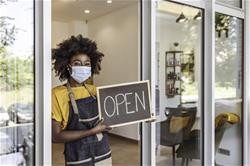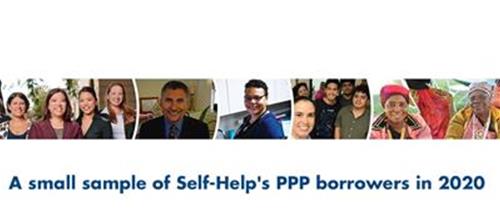

Last year the federal Paycheck Protection Program (PPP) allocated $800 billion in relief to small businesses and nonprofits affected by COVID and funded over five million loans. This program, administered by the federal Small Business Administration (SBA), was unprecedented in scope, but flawed. It quickly became apparent that many small businesses that most needed relief were not well served by eligibility requirements that favored small but wealthier enterprises. Recently, thanks to strong advocacy by our partners and allies, the outlook for truly small businesses is better.
When a second round of PPP lending was announced at the end of 2020, advocates pressed for improvements. Self-Help’s affiliate, the Center for Responsible Lending (CRL) was among 100 organizations that explicitly called for changes that would better serve African American, Latino and immigrant-owned small businesses and nonprofits.
Their voices were heard. On February 22, the Biden Administration announced key adjustments to PPP lending requirements that better targets small businesses that were left behind in the first round of PPP lending. Among the changes made:
- Businesses or nonprofits with fewer than 20 employees now have an exclusive application period that began on Feb. 24 and will end on March 9. This should be particularly helpful to Black- and Brown-owned businesses: Nearly 95% of Black-owned firms and 91% of Latino-owned firms have no employees beyond the owners, compared to 78% for white-owned firms.
- Access to PPP loans will be expanded greatly by removing barriers to applicants who are delinquent on federal student loans. Also, applicants with felony charges within the previous year will not be automatically disqualified due to charges that are not fraud related.
- Eligible non-citizen business owners who are lawful U.S. residents will be able to apply for PPP relief.
A more general change involves how income is calculated for sole proprietors, independent contractors and self-employed workers. Previously the SBA determined loan amounts that PPP applicants could receive based on the applicant’s net profit. Now loan amounts will be determined based on gross income, which advocates say gives a truer representation of business relief needs. This will greatly expand the PPP lending net and help support the survival of more small businesses and nonprofits rooted in their communities and providing essential services.
CRL has published a more detailed summary of changes here. Thanks to CRL and all the many allies and partners who worked together for a more equitable and inclusive PPP program.
Self-Help’s PPP Lending
During last year’s PPP lending, Self-Help mobilized more than 150 staff and many resources to offer relief loans urgently needed in the areas we serve. While nationwide there were well publicized cases of PPP loans that went to very large “small” businesses, as a mission-focused community development financial institution we focused on assisting nonprofits and small businesses run by women and people of color.
In 2020, 66% of our PPP loans went to nonprofits; 59% to nonprofits or small businesses led by people of color; and our median loan amount was $21,000. See more information about our first-round PPP lending and borrowers here.

Now that the second round of PPP lending is underway, our first responsibility is providing Second Draw PPP loans to the hardest-hit nonprofits and small businesses who relied on us for their first PPP loans. So far in 2021 we have received SBA approval on 400+ loans for over $30 million, helping to maintain more than 3,600 jobs. The work continues! Second-round lending on PPP loans ends on March 31.
Regardless of whether you received a PPP loan through Self-Help, we have PPP guidance and resources available on our website. Recently we updated our Frequently Asked Questions on PPP loans. Our FAQs, which were recently updated, include answers on topics such as these:
- Am I eligible for a 2nd draw PPP loan?
- How are 2nd draw loan amounts determined?
- How does the SBA define and calculate “gross receipts” for 2nd draw loans?
- How does SBA define payroll costs?
- How and when do I apply for forgiveness of a PPP loan?
There’s much more information in the FAQs and on our website, and we will update our information as SBA sends additional guidance on second round lending.